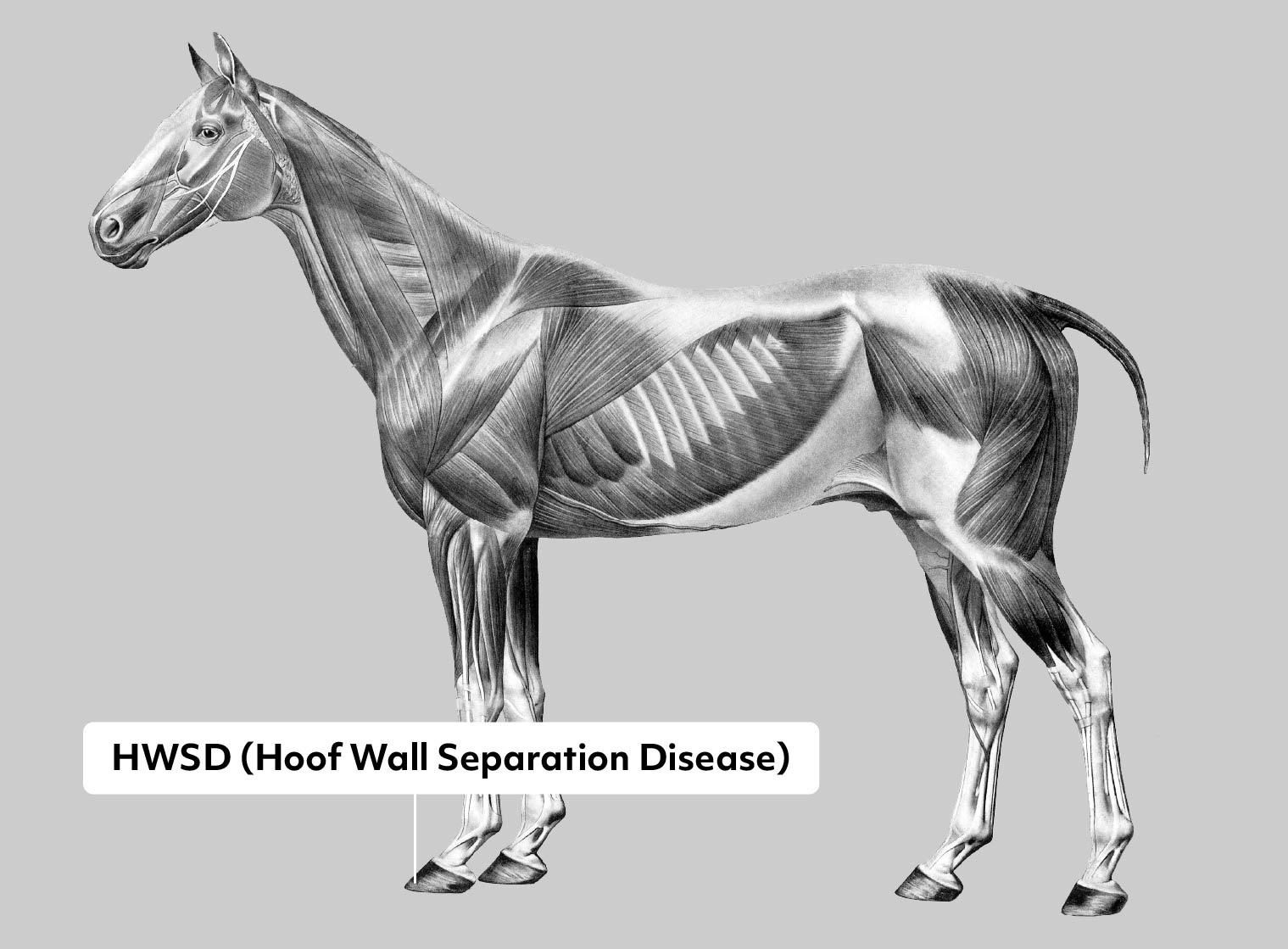Hoof Wall Separation Disease (HWSD)
Gene or Region: SERPINB11
Reference Variant: -
Mutant Variant: C
Affected Breeds: Connemara
Research Confidence: High Confidence - Strong association and functional data in studied population
Explanation of Results: hwsd/hwsd = homozygous for Hoof Wall Separation Disease, trait expressed hwsd/n = heterozygous for Hoof Wall Separation Disease, carrier n/n = no variant detected
Hoof Wall Separation Disease: Genetic Causes, Diagnosis, and Treatment in Horses
Hoof Wall Separation Disease is characterized by separation and breakage of the dorsal hoof wall extending up from the sole. Affected ponies begin showing symptoms at less than 6 months of age, and often develop chronic laminitis. Frequent hoof trimming and glue on shoes can help manage the condition. Hoof wall separation disease is an autosomal recessive disorder, thus a pony must inherit two copies (HWSD/HWSD) to show symptoms. Ponies with only one allele (HWSD/n) are known as carriers due to their ability to produce affected offspring.
Gene Information
SERPINB11 is a serine protease inhibitor of unknown function. In normal horses, it is highly expressed in the corony band. However, the insertion associated with HWSD results in a premature stop codon, resulting in an incomplete protein and greatly decreased expression.
References
Finno CJ et al., “SERPINB11 frameshift variant associated with novel hoof specific phenotype in Connemara ponies.” (2015) PLoS Genet. 11: e1005122. PMID: 25875171
More Horse Health
Foal Immunodeficiency Syndrome
Foal immunodeficiency syndrome (FIS) is a failure in the development of the adaptive immune system. At 3-6 weeks of age, once the maternal antibodies begin to degrade, foals exhibit signs of anemia, diarrhea, and pneumonia. As these foals fail to respond to treatment for infections, they are humanely euthanized at a young age.
Glanzmann Thrombasthenia
Glanzmann Thrombasthenia (GT) is a blood platelet function disorder, resulting from a reduction in the platelet fibrinogen receptor protein. Clinical signs can be characterized by bleeding on the skin or from the mouth/nostril/gastrointestinal mucosas, and may include skin rashes with blood spots under the skin, nasal bleeding, gastrointestinal and gingival bleedings.
Glycogen Branching Enzyme Deficiency
Glycogen Branching Enzyme Deficiency (GBED) is a lethal recessive disorder characterized by seizures, muscle weakness, respiratory failure, and death. Many affected foals do not make it full term and are aborted or stillborn. Carriers (gbed/n) have no known issues.
